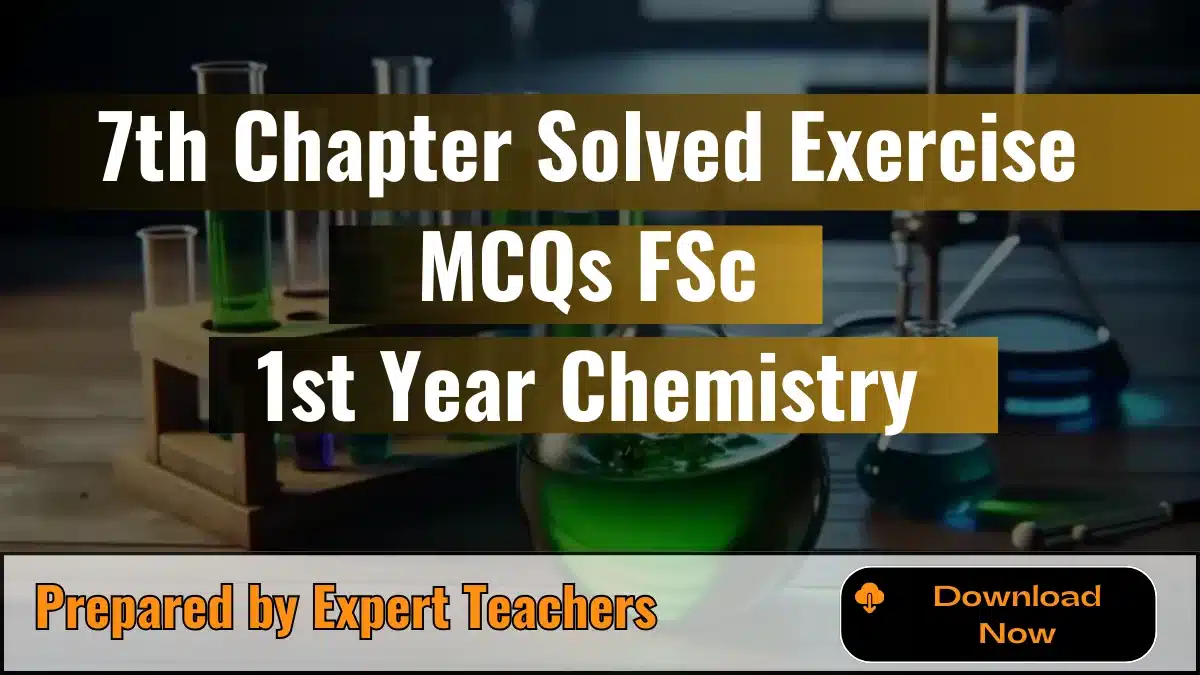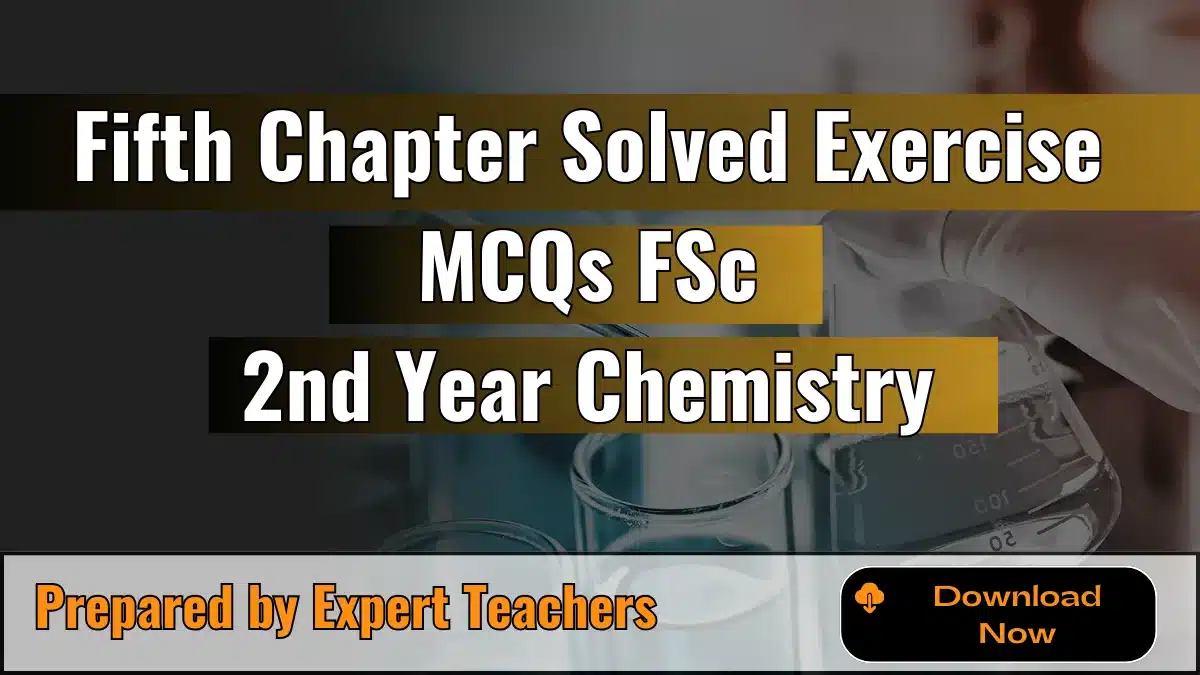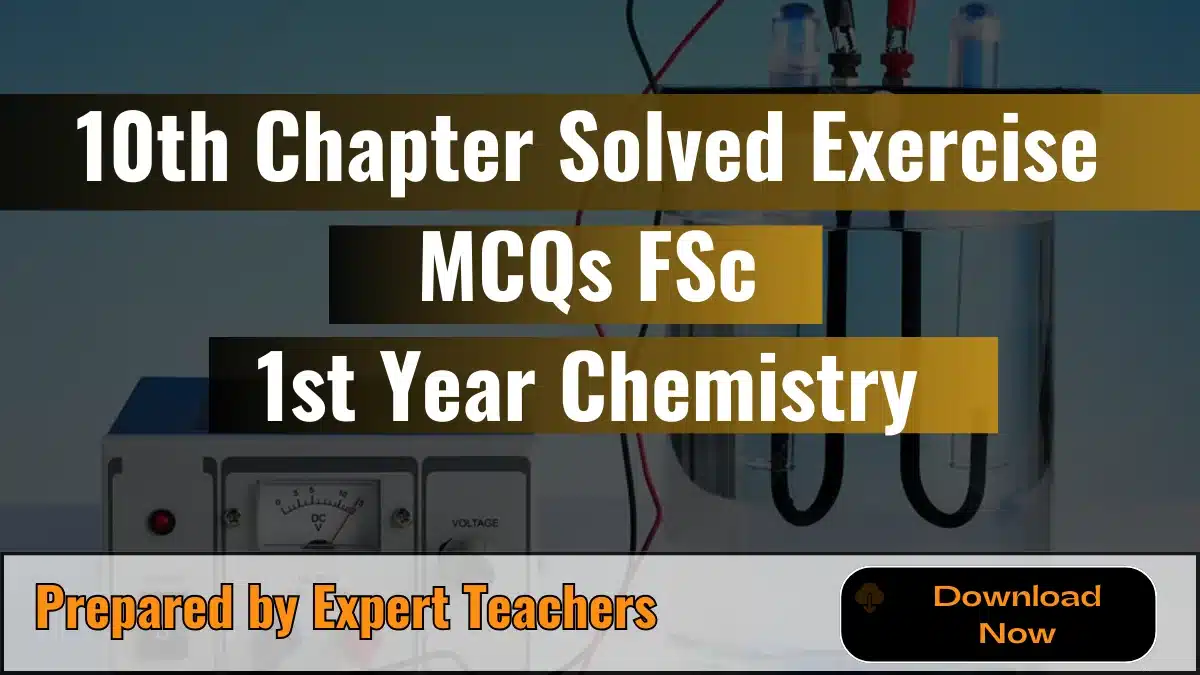11th Chapter Solved Exercise MCQs of FSC First Year Chemistry
The 11th chapter Solved Exercise MCQs of FSC 1st-year Chemistry offers a comprehensive collection of multiple-choice questions with answers. Each question is accompanied by a short explanation to clarify the correct choice. These solutions aim to assist students in exam preparation by simplifying complex concepts and building a strong foundation for success.
11th chapter solved MCQs with explanation
1. In zero order reaction, the rate is independent of:
(a) temperature of reaction.
(b) concentration of reactants
(c) concentration of products
(d) none of these
Explanation: The correct answer is (b). Because In a zero-order reaction, the rate law is given by Rate = k1, where k is the rate constant. This means that the reaction rate does not change with changes in the concentration of the reactants.
2. If the rate equation of a reaction 2A + B → products is, rate =k[A]2[B], and A is present in large excess, then order of reaction is:
(a) 1
(b) 2
(c) 3
(d) none of these
Explanation: The correct answer is (a). Because if A is in large excess, its concentration is nearly constant. So, the rate mainly depends on ([B]). In this case, the reaction seems to be first-order with respect to ( B ). Thus, the observed order of the reaction is 1.
3. The rate of reaction:
(a) increases as the reaction proceeds.
(b) decreases as the reaction proceeds.
(c) remains the same as the reaction proceeds.
(d) may decrease or increase as the reaction proceeds.
Explanation: The correct answer is (b). Because as the reaction progresses, the concentration of reactants decreases. Since the rate of reaction depends on the concentration of reactants, a lower concentration leads to a slower reaction rate. Therefore, the rate of reaction typically decreases as the reaction proceeds.
4. With an increase of 10°C temperature, the rate of reaction doubles. This increase in rate of reaction is due to:
(a) decrease in activation energy of reaction.
(b) decrease in the number of collisions between reactant molecules.
(c) increase in activation energy of reactants.
(d) increase in number of effective collisions.
Explanation: The correct answer is (d). Because when the temperature increases by 10°C, the rate of reaction typically doubles due to an increase in the number of effective collisions between reactant molecules. Higher temperature means that molecules move faster and collide more frequently with greater energy. These collisions are more likely to have enough energy to overcome the activation energy barrier, leading to an increased rate of reaction.
5. The unit of the rate constant is the same as that of the rate of reaction in:
(a) first order reaction.
(b) second order reaction.
(c) zero order reaction.
(d) third order reaction.
Explanation: The correct answer is (c). Because for a zero-order reaction, the unit of the rate constant is the same as the unit of the rate of reaction. This is because the rate of reaction is constant and doesn’t depend on the concentration of the reactants.







Leave a Reply